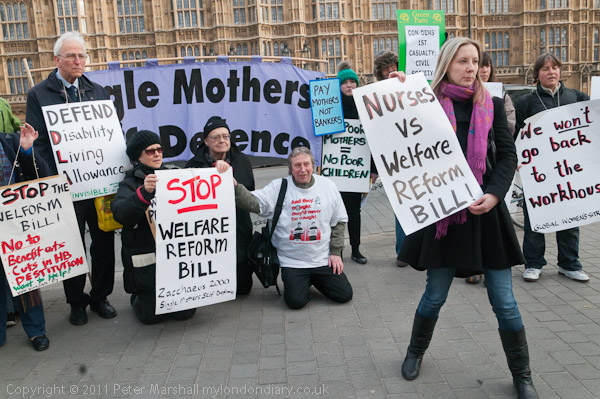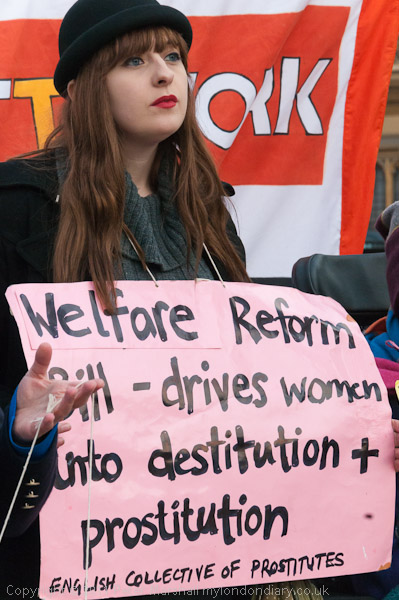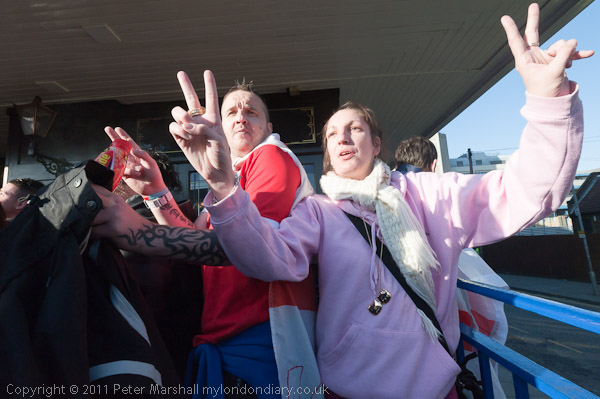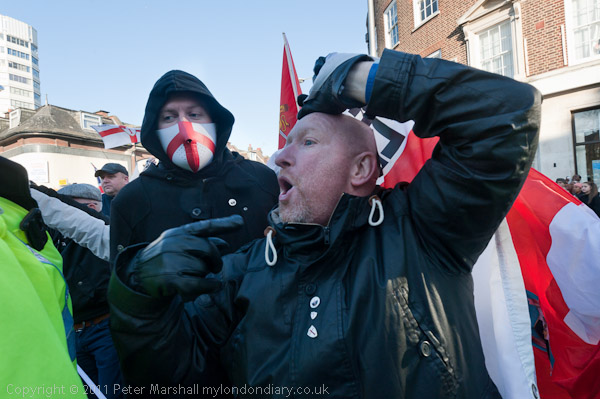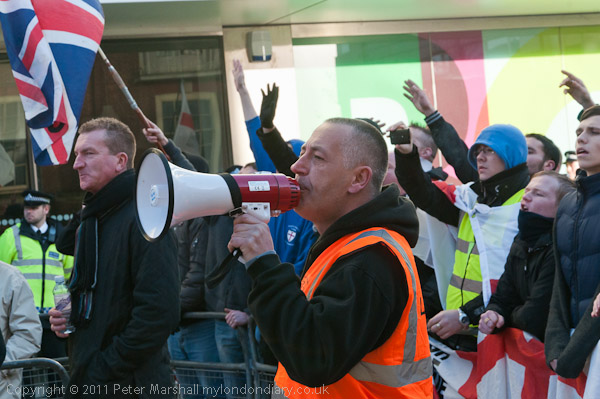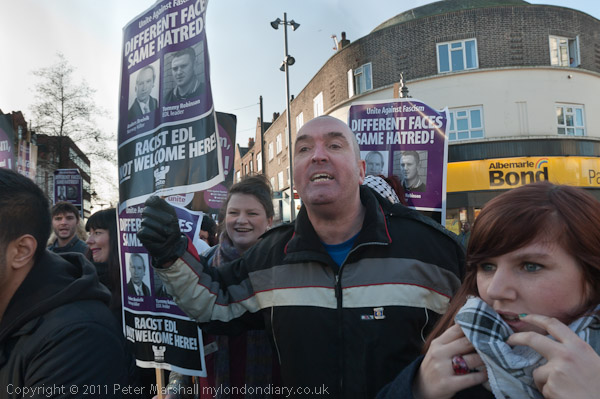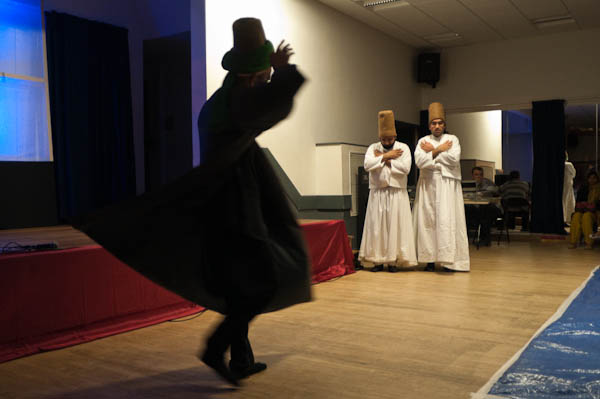Sunday saw the 31st Arbaeen procession in central London, which is said to be the oldest Arbaeen/Chelum Procession of Imam Husain in the west, and is one of the larger annual Muslim processions in the UK, with around 5000 people taking part.
It was quite a contrast from the previous day, when I’d been photographing the English Defence League protesting against ‘Muslim extremists’ and it was certainly a much friendlier and more interesting event, if perhaps less newsworthy. As on previous occasions, I felt very much welcomed for taking an interest in this religious event, commemorating the end of an intense annual period of 40 days of mourning the massacre of Imam Hussain in 680AD.
It’s an event that has changed to some extent as I’ve photographed it over the past six or seven years, but even so, like all events that I’ve been to a number of times it gets harder to find something different to say in the pictures, rather than just to repeat myself.
I was held up slightly by Sunday morning rail problems, with engineering works as usual, but these had caused some signalling problems, so the prayers had already started when I arrived.
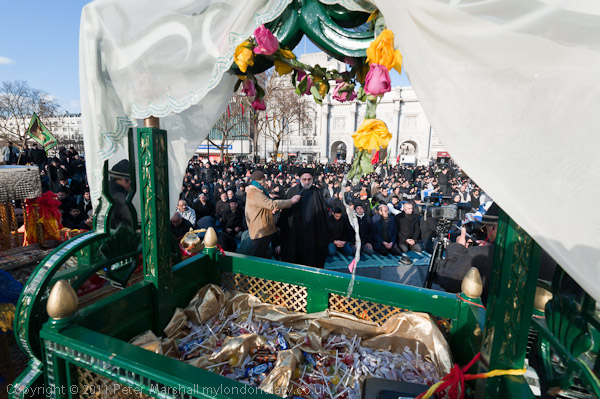
I played around a little, with framing them through the decorated cradle (Imam Hussain’s 6 month old son was also killed) or past the sides of the decorated replica shrines, but wasn’t really too happy with any of the images.
The paved area at Marble Arch was fairly crowded around the outside of all those at prayer, and as I walked around it I found relatively few opportunities for pictures. Two things that struck me were the many large flags this year, and also that most of the women seemed to have placards.
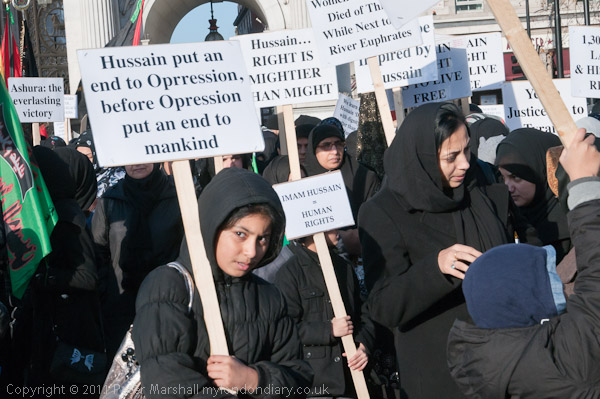
There seemed to be less taking place at Marble Arch than in previous years, where there have sometime been various activities before the procession. This time there seemed only to be a few speeches after the prayers before it began.
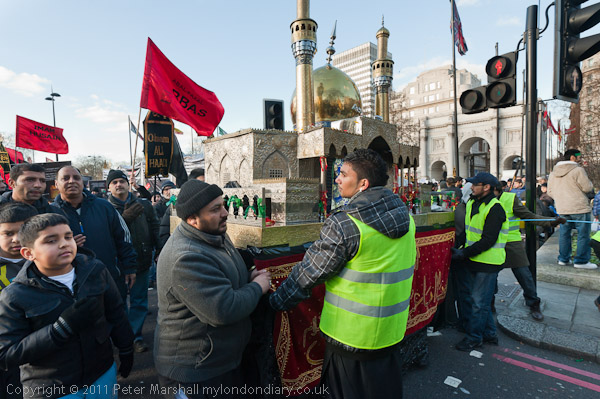
Photographically I was having problems with contrast. It was a beautiful sunny day with a clear blue sky and a strong low winter sun which seemed to send my camera metering haywire. It doesn’t help that my normal reaction to tricky light is to work into it, probably because my first camera came with the advice something like “only take pictures on sunny days, and make sure that the sun is behind you” which Kodak used to give to Box Brownies, and I was ever contrary.
I wasn’t the only photographer having such problems, and another came up to me and told me all his pictures were getting ‘washed out’ and asked me what he should do. I told him to try some exposure compensation and got on with trying to sort out my own problems with rather less success.
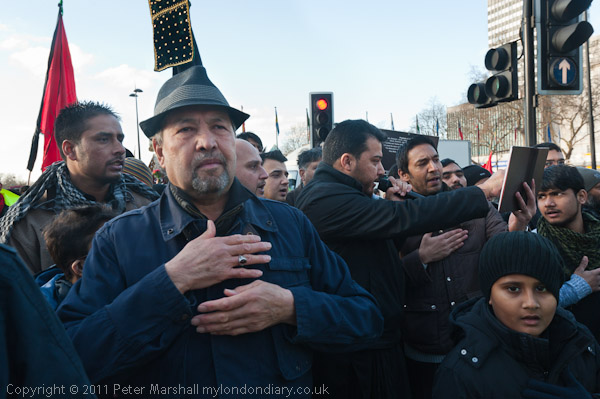
I should have used flash fill, but there are some times when I think flash is just too obtrusive. Looking back I don’t think this was one of them, but for some reason I was reluctant to start using flash. And the pictures that I took suffered from it, some to the extent of being unusable.
Once the march turned into Park Lane, things got easier, as the sun was now coming over my left shoulder. I did manage to slip and fall slightly painfully getting down from the fairly low barrier at the edge of the roadway, but otherwise things were pretty straightforward. Then I found a nice solid block of concrete holding a traffic light which took me up around 4 feet and was stable enough even for a balance-challenged person like me. Once you’ve found a spot like this, it is hard to leave it, even if there might be better pictures if you got down on the ground again and got stuck in. Because if you get down, you are certain to see another opportunity for a picture from up there, but equally certainly someone will have climbed up and now be where you need to be.
I decided to stay there until more or less the whole of the march had passed by – and it was pretty slow moving, so I was stuck there for around 25 minutes. Probably the best pictures were those with lots of flags and standards, such as this:
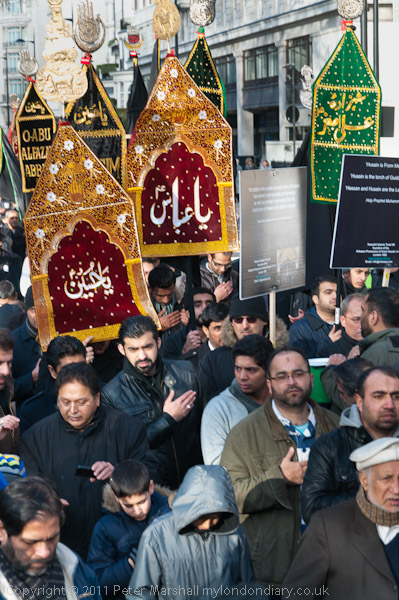
or this of the women’s section:
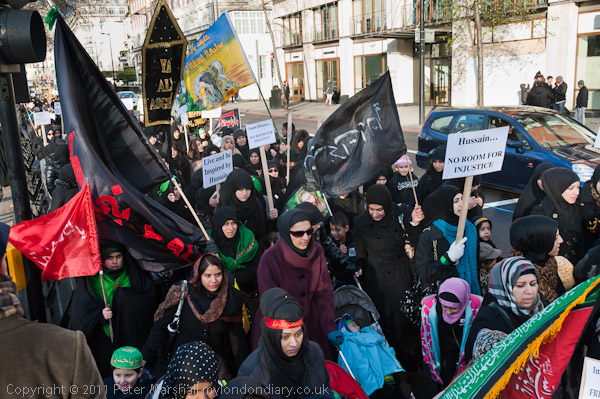
but certainly I was pleased to get down and photograph from somewhere where I could move around and select my viewpoint.
In some ways the most important aspect of the event in the beating of breasts in an expression of mourning, certainly in the more vigourous manner it is carried out by some of the groups of mainly younger men, who had by now stripped to the waist.
Most of the pictures I took where in an area where the central grass reservation is a couple of feet higher than the roadway, so I was able to look down on the men. But this wasn’t quite high enough, and also not quite close enough, so most of these images were taken holding the camera high andstretched out in front of me at arm’s length, using either the 16-35mm on the D700 or the 10.5mm semi-fisheye on the D300.
Sometimes the 16mm view worked quite well:
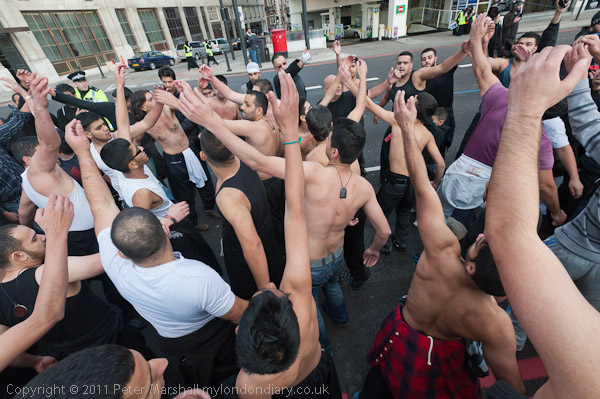
but generally I prefer the images from the 10.5 mm, some of which are slightly corrected and some also cropped.
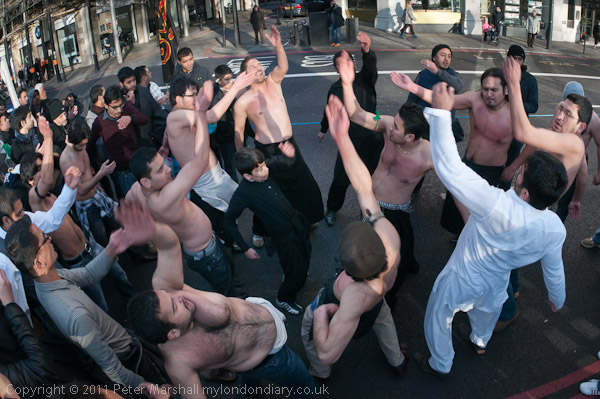
The story and more pictures are on My London Dairy: Arbaeen Procession in London
________________________________________________________
My London Diary : Buildings of London : River Lea/Lee Valley : London’s Industrial Heritage
All photographs on this and my other sites, unless otherwise stated are by Peter Marshall and are available for reproduction or can be bought as prints.
To order prints or reproduce images
________________________________________________________







